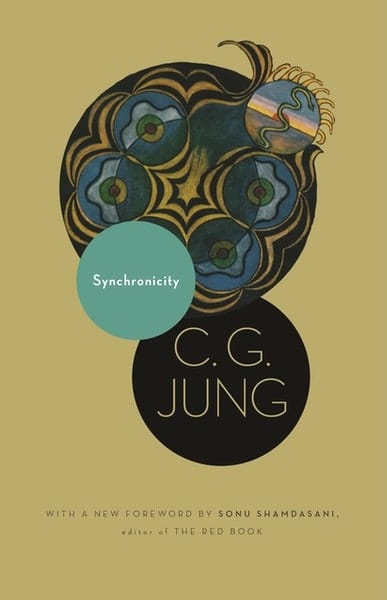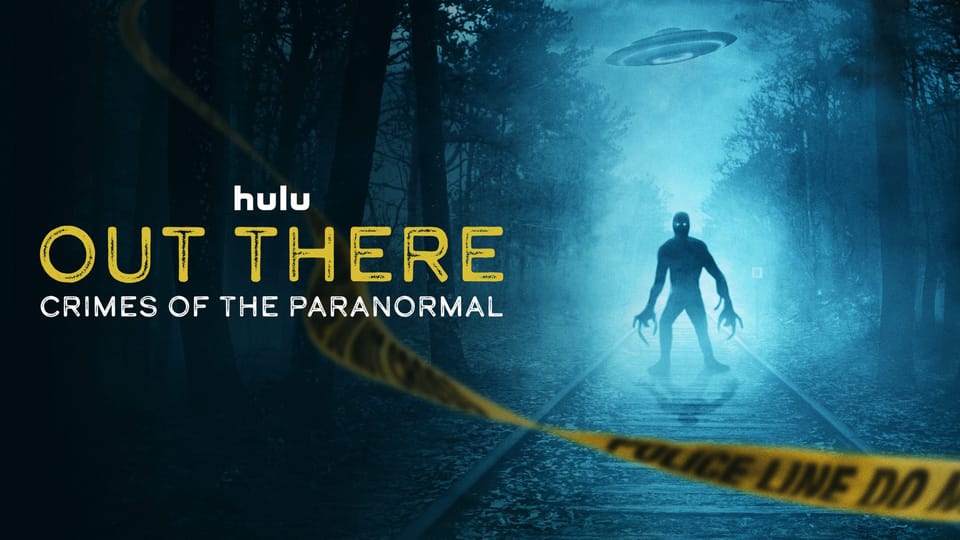Synchronicity is a concept I knew nothing about before watching Hellier, a documentary show about a several years long investigation of Kentucky goblins and other strange events. According to the investigative team, synchronicity is what drew them to the investigation and provided an impetus to keep going, even as they faced challenges along the way. In fact, the word “synchronicity” is mentioned so often on the show that my friend and I once joked about turning it into a drinking game.
Hellier has renewed my interest in the paranormal and the weird, leading me to want to explore more about the concepts and books discussed. Diving into the concept of synchronicity and trying to better understand it seemed like a good place to start.

The term “synchronicity” was first coined by Dr. Carl Jung to describe the concept of meaningful coincidences. Inspired by classical Chinese texts (such as the Tao Te Ching), Gottfried Leibniz’s monadology, astrology, and quantum mechanics, Jung introduced the concept in the 1920s. Over his years of research, he continued to refine the concept and published a paper on the subject in 1952, titled Synchronicity: An Acausal Connecting Principle. This work is also connected to his theories regarding archetypes and the collective unconscious, acting as a determining principle as relevant as space, time, and causality.
In this work, he discusses the modern scientific mindset, noting that since natural laws are built on statistical truths and causality, they inherently leave out unique or rare events. From his point of view, in order to truly understand nature, the entirety needs to be accounted for, including those occurrences that fail to fit neatly into existing statistical models.
Jung’s research and experience as a psychologist lead him to the conclusion that there exist coincidences that contain meaning or are too unusual to ignore. As an example, he presents a series of occurrences from his own life:
On April 1, 1949, I made a note in the morning of an inscription containing a figure that was half man and half fish. There was fish for lunch. Somebody mentioned the custom of making an “April Fish” of someone. In the afternoon, a former patient of mine, whom I had not seen for months, showed me some impressive pictures of fish. In the evening, I was shown a piece of embroidery with sea monsters and fishes in it. The next morning, I saw a former patient who was visiting me for the first time in ten years. She had dreamed of a large fish the night before. A few months later, when I was using this series for a larger work and had just finished writing it down, I walked over to a spot by the lake in front of the house, where I had already been several times that morning. This time a fish a foot long lay on the sea-wall. Since no one else was present, I have no idea how the fish could have got there.
When coincidences pile up in this way one cannot help being impressed by them — for the greater the number of terms in such a series, or the more unusual its character, the more improbable it becomes.
The multiple repetition of the fishes, for Jung, was numerous enough that he felt he couldn’t ignore it. He also presents a number of other examples within his book, some involving precognitive dreams and out of body experiences. His interest in synchronicity seemed to be tied to his interest in the paranormal and psychic states.
Experimental Work
By its very nature, synchronicity is difficult to prove — and Jung acknowledges this in his paper. However, he gives it the old college try, citing as evidence the experimental work of J.B. Rhine on ESP, in which subjects were asked to guess the symbols on a series of cards. He found this research particularly compelling, especially how the emotional state of the subject seemed to impact the number of cards they guessed correctly. “An initial mood of faith and optimism makes for good results,” wrote Jung. “Skepticism and resistance have the opposite effect, that is, they create an unfavorable disposition.”
In addition to making note of Rhine’s work, Jung also attempted a statistical experiment of his own using astrology, in order to “just to see what kinds of figures would turn up.” The experiment involved gathering astrological charts for three groups of married couples (180 couple in the first group) and then comparing various elements of the charts to determine their probability. Based on his paper, Jung seemed to have been (at least tepidly) pleased with the statistical results as they pertain to synchronicity.
I’m not a statistician (or even all that mathematically inclined), so I don’t know how to interpret the results from either of these experiments. But I imagine that neither would impress someone from a modern scientific mindset, as the “hits” seem to be relatively low.
That said, I don’t believe that this negates the concept of synchronicity entirely. Not every philosophical concept needs to be statistically proved to be intellectually interesting.
Meaningful Coincidences and What The Mean
What makes a coincidence meaningful? For Jung, an instance becomes more than than chance when the connection is significantly strange or when the coincidences become so numerous that they’re impossible to ignore (as with his experience with the fishes). As an example, he notes that a number of similar medical cases occurring at a hospital are chance — but the sudden appearance of a rare beetle when you’re discussing a dream about scarabs is a synchronicity.
I’m not sure there is an easy way determine the difference between chance and a meaningful coincidence. Some would argue that confirmation bias (the tendency to interpret new evidence as confirmation of one’s existing beliefs or theories) comes into play — and I think that’s a valid argument. If you are continually on the lookout for, say, the number “13”, then you are more likely to find the number all around you.
However, I think the important element to synchronicity is the idea that the coincidences are “meaningful”, which is entirely subjective. What is meaningful to one person, may not be so for another. It’s about a personal connection to the coincidence beyond “oh, that’s neat”.
My definition of what constitutes a synchronicity is this: an coincidence that is personally meaningful in such a way as to make you pause and pay attention. Or a coincidence in which the meaning is not immediately be clear, but is strange enough to make you want to investigate and understand it. The important aspect being the subjective experience of the coincidence, which may not be relevant to anyone else.
So, if you are experiencing synchronicities, what does that mean?
As far as I can tell, Jung’s paper isn’t clear on this point from an individual point of view. However, he does seem to believe that synchronicity signifies that some sort of psychic event or connection to the collective unconscious is occurring.
The Hellier investigative team, having experienced a multitude of synchronicities throughout the show, explain their belief that these meaningful coincidences indicate that you’re on the right path, that the choices you’re making are leading you in the right direction — a concept that appeals to me.
One of the things that seems particularly valuable about synchronicities is how they pull you out of the mundane routine. It’s easy to go throughout your day in a kind of methodical daze, without really thinking about what you’re doing and why. Experiencing a sudden, strange, meaningful coincidence causes you to stop and pay attention, to be more aware of the present moment and what’s going on around you.
If a synchronicity occurs, it’s a good opportunity to check in with yourself. What’s happening right now and how do you feel about it? Are there any significant choices on the horizon? Are there any fears or doubts that may have been holding you back from pursuing something you desire? How can you reconsider your point of view or current emotional context?
Whether or not synchronicity involves connecting to some kind of external, spiritual power or whether it involves a personal psychological experience, the concept provides an interesting way to pay attention to what’s going on in the world around us and consider it from a new perspective.
Note: Header images is the clock tower at the Loggia Square, Brescia, Province of Brescia, Region of Lombardy, Italy. (Source: Wikimedia Commons)
This post was first published on Medium on January 22, 2021.




